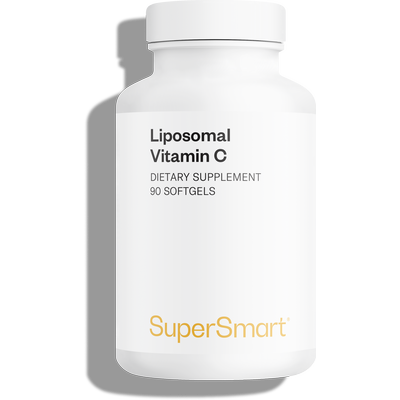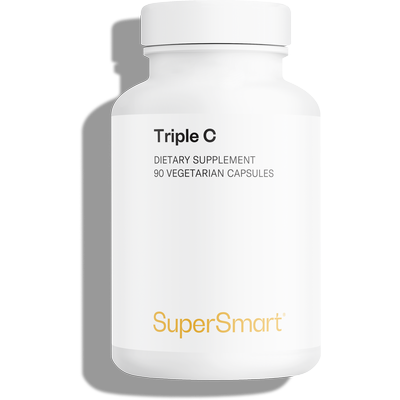11-02-2019
Colds, flu, bronchitis: the two best ways of avoiding them
 During the winter months, almost all of us will be exposed to the flu virus but only some will go on to be infected by it. How can this be explained?
During the winter months, almost all of us will be exposed to the flu virus but only some will go on to be infected by it. How can this be explained? Contrary to popular opinion, catching a cold or the flu is not just down to bad luck or being in the wrong place at the wrong time. When your body comes into contact with viruses, whether you succumb or not depends on one important thing: the quality of your immediate immune response in the face of attacks. If the response is too slow or too weak, you’ll become infected, whereas an appropriate immune response will enable your body to repel the assailant. Your immune system is thus fighting off attacks all the time without you realising it, saving you from countless unpleasant experiences. Certain individuals, however, never seem to produce an optimal immune response : they fall ill at the slightest provocation because their immune system falters in the face of microbial intruders, without exploiting all its defensive potential.
Yet there are scientifically-supported solutions to help you escape this fate, or simply maximise your chances of staying well this winter, one of which concerns the king of antioxidants’ - glutathione.
1) N-acetylcysteine the smart way to circumvent the system
Synthesised in the liver, glutathione is one of the body’s most powerful antioxidants and is heavily involved in the immune system. When glutathione concentrations increase, so too do the numbers and activity of CD4 T lymphocytes, immune response helper cells which improve the body’s overall defences1. Scientists have recently discovered that glutathione has an even more specific role in relation to viruses, particularly flu viruses: it inhibits the activity of enzymes used by the viruses to colonise cells in the mouth and throat.
The problem is that supplementing orally with glutathione does not actually improve the immune system. Proteins present in the gut appear to deactivate it, significantly reducing its bioavailability2. In addition, it has considerable difficulty crossing the cell membrane to reach the 'battleground’. In its natural state, it doesn’t need to since it is directly synthesised in the cell. The trick is therefore to use one of its precursors, N-acetylcysteine (NAC) which not only has excellent bioavailability, but also crosses cell membranes more easily to penetrate the cell interior, where it is converted into cysteine and then into glutathione. It’s a smart strategy.
This idea of replenishing glutathione reserves using NAC3 has moved rapidly from theory to practice. We now know it works and helps to reduce the damage caused by reactive oxygen species (ROS), compounds that significantly impair our immune responses. In measuring its effects on immunity, scientists observed that N-acetylcysteine even reduced the production of pro-inflammatory chemical mediators4 and had a thinning effect on bronchial secretions5.
How to use NAC against the flu and seasonal ailments
As winter approaches, you can take a daily capsule of a href=http://www.supersmart.com/article.pl?id=0072&fromid=WNN target=_blank>N-Acetyl Cysteine (600 mg) as a preventive measure. If you’re really stressed and tired or feel below par, you can double the dose.
From the moment the first symptoms appear, increase the dose to two or even three 600mg capsules a day. At that point, there is still time to reduce the severity of the flu attack.
2) Vitamin C, the classic antidote to the common cold
1970 saw the publication of Linus Pauling’s best-selling book Vitamin C and the Common Cold: a Nobel prize-winning scientist tells you how you may avoid colds and improve your health, written by the only man to have won two Nobel prizes (and who lived until the mighty age of 93). Since then, vitamin C has been a popular remedy against the common cold. Unlike glutathione, it is an antioxidant which cannot be synthesised by the body and must therefore be provided exclusively by the diet. But like glutathione, vitamin C helps prevent the collapse of the immune system 6 by instantly reducing the ROS-induced damage7 that plays a part in many diseases and conditions (stress, lack of sleep, exposure to pollutants, smoking, etc.). It is therefore the perfect partner to N-acetylcysteine for improving the immune response.
How much vitamin C do we really need?
The latest research shows that optimal intakes of vitamin C lie somewhere between 400mg and 1g a day, corresponding to a maximum limit in plasma of 80 ¼mol/L8. We are some way off these intakes with our official recommended daily amounts which vary between just 75 mg (United States) and 110 mg (France and Belgium). So why the major discrepancy between scientific knowledge and national recommendations? Well, the latter were set at a time when vitamin C was considered to be a simple molecule that cured scurvy. Scientists established the doses needed to prevent this disease and it never occurred to them that it could have the potential to improve our health more generally.
The issue now is how to obtain 700mg of vitamin C a day when 40%-60% of the population already struggle to achieve the 110g recommended by health authorities. And here, we need to be pragmatic. We humans are rare amongst mammals in being unable to produce vitamin C ourselves, but our diet potentially chock-full of it9, is no longer compatible with the sedentary lifestyles many of us lead. To obtain 700mg of vitamin C a day, you’d need to eat: 1 red pepper, 1 green pepper, 1 kiwi fruit, 1 orange, 1 portion each of broccoli, peas, cauliflower, pineapple and strawberries, 1 glass each of grapefruit, orange and vegetable juice, and 4 Brussels sprouts every day.
Not only that, but you’d need to guarantee their freshness (impossible, given the differences in seasonal availability) and their quality (that they were grown in rich soil, in non-GMO conditions, without the use of pesticides). A big ask, I’m sure you’d agree.
The best solution is therefore to look to nutritional supplements, provided, that is, you know what to choose. Vitamin C’s popularity has a downside: some products on the market offer dubious quality or are overly expensive. To help you decide, here are five things you should know before buying a vitamin C supplement:
1) Natural-source vitamin C is identical to synthetic vitamin C. They are absorbed in exactly the same way but natural-source products are generally more expensive. Given their equivalence, you have to ask yourself if the natural-source option is really worth the money.
2) The flavonoids present in fruit and vegetables increase vitamin C’s absorption, as long as there is at least 50mg in each tablet.
3) The ascorbic acid form is the one found in fruit and vegetables, but the buffered forms (such as sodium ascorbate, calcium ascorbate, magnesium ascorbyl phosphate have the advantage of being less acidic and causing fewer stomach problems in those with sensitive digestive systems.
4) The liposomal form (a blend of lecithin and ascorbic acid, encapsulated in a lipid bilayer such as in a href=http://www.supersmart.com/article.pl?id=0734&fromid=WNN target=_blank>Liposomal Vitamin C) appears to improve blood levels compared with standard administration of the molecule.
5) Each tablet should not contain too high a dose as it works more effectively when spread over several doses in a day.
How can you use vitamin C to protect against the flu and seasonal ills?
As a preventive measure, you can take three tablets a day, all year round, of Triple C (a supplement that combines all the above mentioned criteria), or at least for three to eight weeks before the first flu epidemics are expected.
These two practical solutions, combined with effective stress management, good quality sleep and a balanced diet, represent the best way of maximising your chances of escaping the trials of winter. However, the benefits don’t stop there: improving your immune system also provides more effective prevention against the development of cancer and cardiovascular problems, as well as promoting longevity Everything’s connected.
References:
1. De Rosa SC, Zaretsky MD, Dubs JG, et al. N-acetylcysteine replenishes glutathione in HIV infection. Eur J Clin Invest 2000;30:915-29.
2. Lomaestro BM, Malone M. Glutathione in health and disease: pharmacotherapeutic issues. Ann Pharmacother 1995;29:1263-73.
3. Kelly GS. Clinical applications of N-acetylcysteine. Altern Med Rev 1998;3:114-27.
4. Gillissen A, Nowak D. Characterization of N-acetylcysteine and ambroxol in anti-oxidant therapy. Respir Med 1998;92:609-23.
5. Mucoactive drugs. Balsamo R, Lanata L, Egan CG. Eur Respir Rev. 2010 Jun 1;19(116):127-33.
6. Leibovitz B, Siegel BV. Ascorbic acid and the immune response. Adv Exp Med Biol 1981;135:1-25.
7. Padayatty SJ, Katz A, Wang Y, Eck P, Kwon O, Lee JH, Chen S, Corpe C, Dutta A, Dutta SK, Levine M. Vitamin C as an antioxidant: evaluation of its role in disease prevention. J. Am. Coll. Nutr. 2003;22:1835.
Order the nutrients mentioned in this article

Converted in the body into cysteine, an amino acid needed for glutathione synthesis
www.supersmart.comFurther reading
24-06-2019
Better known as PEA, palmitoylethanolamide is a natural and powerful active principle discovered in 1957. Since then, it has consistently been the subject of new...
Read more04-09-2019
Did you know that of all your organs, it is the lungs which are the first to age? Like the skin, they are exposed to...
Read more03-01-2018
Every year, the same people seem to miraculously escape the epidemics of flu or gastroenteritis. The fact is though, luck has nothing to do with...
Read more© 1997-2025 Fondation pour le Libre Choix
All rights reserved
All rights reserved
Free
Thank you for visiting our site. Before you go
REGISTER WITHClub SuperSmart
And take advantage
of exclusive benefits:
of exclusive benefits:
- Free: our weekly science-based newsletter "Nutranews"
- Special offers for club members only



















